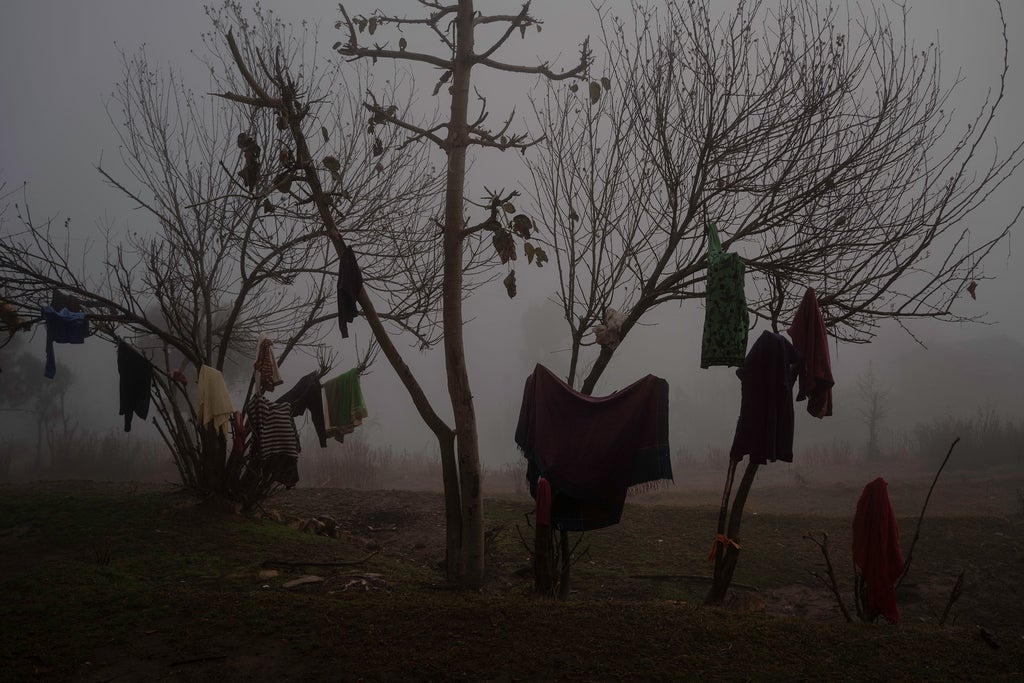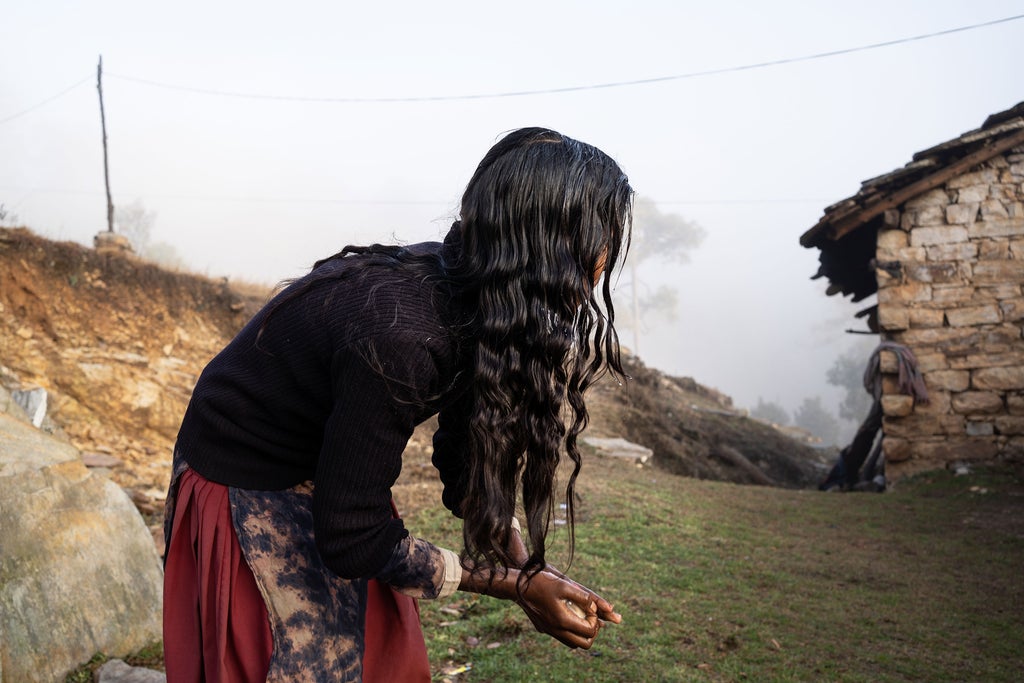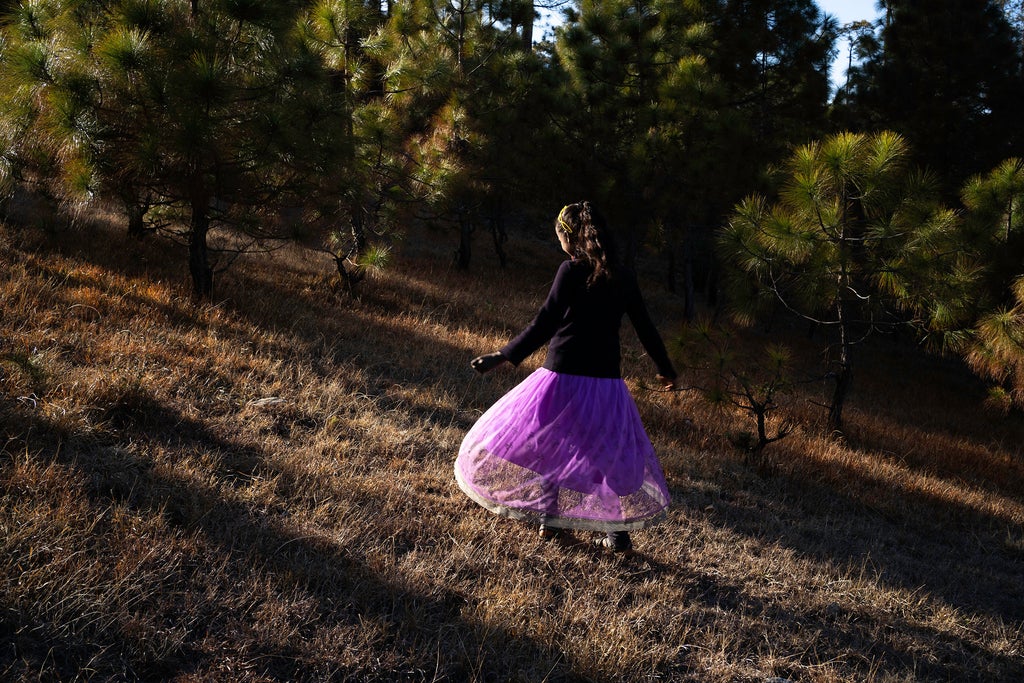“As soon as those first drops of blood trickled between my thighs, my world changed,” says Indian photographer Deepti Asthana, recalling the first time she got her period. This natural sign of approaching womanhood still holds a particular shame where she’s from and so it’s with these fateful words that she introduces her most recent project, A Tale of Two Girls, setting the scene for the story to come.
A Tale of Two Girls documents the intertwined lives of Manisha and Babita, two young friends growing up together in a tiny village in Uttarakhand, deep in the Himalayan wilderness. Asthana first came across the girls in 2016 when exploring near their homes and became intrigued by their lives. Asthana herself had grown up in Bareilly, Uttar Pradesh – a small but populous city in the north of India – and her family had lived in a disputed concrete house with no immediate access to nature, so the rural upbringing of Manisha and Babita was worlds away from her experience – “a whole other India I wanted to understand,” she recalls.

Asthana stayed in the area that whole summer, returning each morning and evening from her homestay nearby to spend time with the girls. She began taking pictures organically, when the moment felt right. She ambled through the forest with them, watched them giggle together as they picked flowers and played games, and witnessed how they took on domestic chores without complaint, cleaning clothes and looping them through twisted trees to dry.


A lot was similar to her own teenage experience but a lot was different, too. Societally, the state Asthana grew up in was very patriarchal. At 16, some of her classmates were getting married while still in school, and that terrified her. She was a tomboy who loved art, but art was not a viable career choice. “If you’re a good student you take science,” she explains, and so she kept her head down, studied hard and became an engineer. For her, this route was a means to an end – “a way to get out of that place and make something out of my life,” she admits. Gradually, with age, independence and a great deal of courage, she switched to photography.
In communities like Manisha and Babita’s, girls get married early too, and are put to work almost as soon as they can walk. While some of the cities in India have slowly modernised, tradition reigns in the villages, Asthana says. As she spent more time with the girls, she noted that their lives were even stricter than her own upbringing, and that they had an exceptional amount of responsibility, from cooking and collecting firewood to feeding animals and taking care of siblings. Economically, they had a little less than Asthana’s family – each girl’s family lived in just one room – but in terms of education they were about on par. Both they and she had gone to government schools, while their brothers were sent private. A girl’s education is still seen as less important than a boy’s, Asthana reminds us.


Outwardly, Asthana says, Manisha and Babita don’t say they fear becoming women because they are already treated as such, but under the surface, she could sense the quiet anxieties that eat away at their childhoods. Babita especially, she says, has some worries about the future. “Her sister got married at the age of 17 and she believes this will be expected of her all too soon too. She doesn’t think she will be allowed to go to college either, even though she studies hard. Both of the girls live in fear of what awaits them as they grow up.”
Asthana wanted her pictures to be these emotional, bittersweet documents of the last few precious years of girlhood before duty comes at them. In the images she took during that summer, and in the ones she took during subsequent trips to visit them in the years that followed, she reveals the harder aspects of their lives and the tender moments too. “I wanted to give the full picture but I didn’t want to focus too much on the struggles – it would have been too easy to only show how hard life is for them,” she says. What she wanted to do instead was reveal how the most beautiful hours of their lives were the stolen ones spent getting lost in nature. “I came to realise that those moments were the only times they were completely alone and free of worry for a while.” Mostly, she hopes that her photographs will help others to understand the entirety of rural Indian life a little better – not just audiences across the world but people living in Indian cities too. “A lot of assumptions are made about people who live in the villages here, because often those of us from the city think that their lives must be completely carefree, surrounded by all that nature, but the reality is not that at all.” Taking these pictures was Asthana’s way of bringing back otherwise completely disconnected stories to share.

Asthana’s favourite picture from the series is one of Babita, walking with her head bowed low, hands clasping a bunch of crimson rhododendrons behind her back. “She appears like a headless girl walking,” Asthana smiles, and it’s true – it’s like she’s carrying the weight of herself and her future in her own hands. Those flowers are symbolic of womanhood too, she explains, they’re offered to the goddesses during the local harvest festival each year. The colour red recurs throughout her pictures – a symbol of menstruation perhaps, and a nod towards that thread of impending adulthood that runs beneath them all.

In India, Asthana concludes, you cannot forget for even a moment that you’re moving through the world as a girl, and what’s expected of you will always be different from what’s expected of a boy. “Your goals are different too, and that limits a lot of girls – there are so many that are talented, but there are very few who actually get the chance to make something out of their life,” she says. “I’m not saying that being a person with a career is the only way to live your life – there are other ways to be happy of course – but the choices they have are very, very limited. It pains me that there are still so many who can’t decide for themselves.” Asthana’s family, meanwhile, are no longer living in the place where she grew up. Her father died when she was young, her mother raised the family alone before eventually retiring elsewhere in the state, and her brothers work in different cities now. They have all moved on in their ways. She knows if she were to return to her old neighbourhood though, there would still be girls living the same kind of life she lived back then.

Asthana developed A Tale of Two Girls really as an excuse to keep travelling. Suddenly she had this freedom and she didn’t want to let it go or think about returning to a sheltered life. But over time, a friendship developed between her and the girls, and the three of them bonded through their shared experiences. Recently, she has been living out the COVID-19 pandemic amid nature in the northeast Indian state of Meghalaya, taking daily walks in the forests that surround her, but she is making plans to return to see the girls as soon as she is able. Meanwhile, the sun remains hazy where Manisha and Babita are from. It hangs low in the sky, just as we see in Asthana’s pictures, a diffused ball of light surrounded by mist. Beneath it, the girls continue to busy themselves with daily life, working, studying, playing occasionally, and waiting for their futures to unfold.


Like what you see? How about some more R29 goodness, right here?
These Are The Women Serving Life Sentences